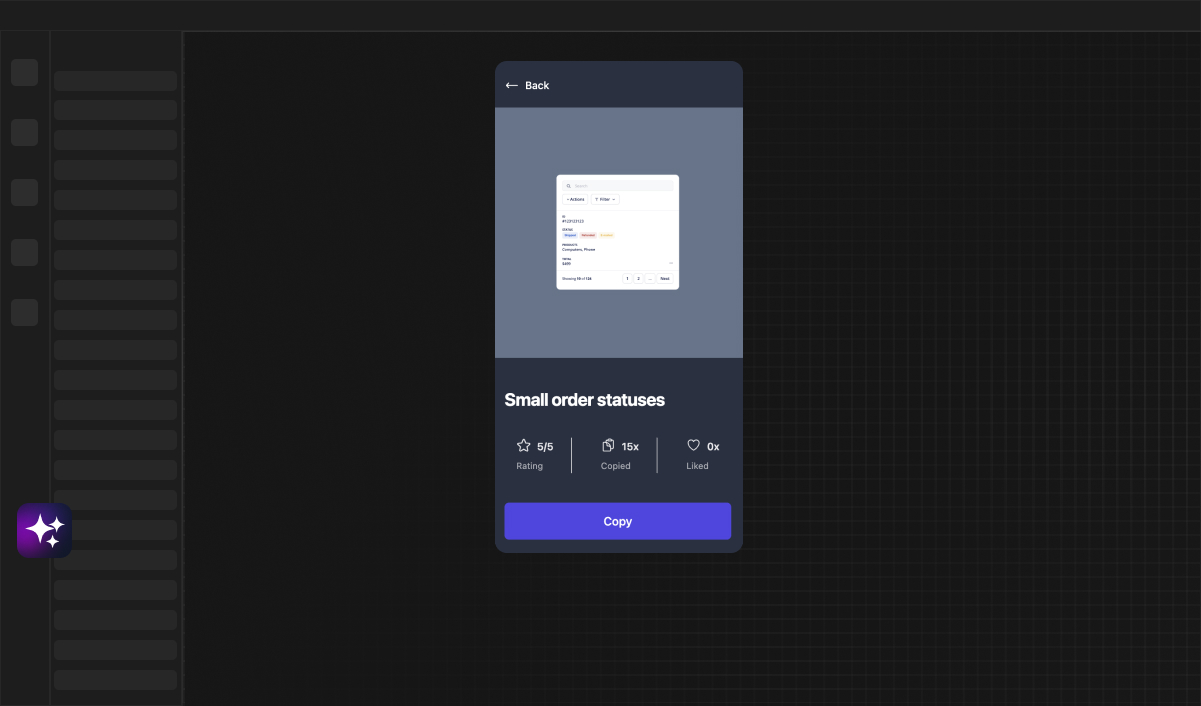
Web Developer
Data Management in Bubble: Best Practices and TipsGuide on Getting started with Bubble.io
Discover essential data management strategies and best practices for Bubble.io users. Learn how to effectively manage data, design interfaces with Framify's components library, and optimize your workflows for a successful Bubble.io application.
Understanding the Basics of Bubble.io for Effective Data Management
Bubble.io is a revolutionary platform that allows individuals with little to no coding experience to build fully functional web applications. It provides a powerful suite of tools for managing data which is central to the functionality of any app. Whether you're creating a social network, an e-commerce site, or a project management tool, the way you handle your data can make or break your application.
The Benefits of Using Bubble.io for Your Projects
Using Bubble.io comes with numerous advantages. It makes development accessible to non-programmers while still offering the complexity and power that experienced developers seek. Bubble's visual programming interface simplifies the process of building complex applications by eliminating the need to write code line by line.
Key Concepts: Databases and User Interface on Bubble.io
A key concept in Bubble is the database, which stores all the data for your application. This includes user information, content, settings, and any other data you need to save. Parallel to this, the user interface (UI) is what your users interact with. It's crucial that the UI is intuitive and that it reflects the underlying data structures effectively.
Getting Started with Data Structures in Bubble.io
Before you dive into creating features, you need to define the structure of the data that your app will handle. This is done by creating data types with fields that represent the data points you'll store.
Defining Your Data Types and Fields
Each data type should represent a conceptual entity in your app, like a 'User' or 'Product.' Fields are attributes of these entities; for instance, a 'User' might have fields for 'Email,' 'Password,' and 'Profile Picture.' It's crucial to think ahead about what information you need to store and how it will be used.
Planning Relationships Between Data Types
Data types can be related to each other. For example, a 'Product' might relate to a 'User' data type to show ownership. In Bubble, these relationships are defined by creating fields that are of another data type, enabling you to weave a network of connected data that reflects real-world relationships.
Best Practices for Data Management on Bubble.io
A successful application is built on a foundation of well-managed data. This involves designing your database for efficiency, ensuring that your user's data is secure, and being compliant with privacy laws.
Keeping Your Database Lean and Efficient
One best practice is to keep your database 'lean' by avoiding unnecessary data. This means only creating fields and data types that are necessary for the functioning of your app and being mindful of how you structure data to avoid redundancy.
Ensuring Data Security and Privacy Compliance
Data security is of utmost importance. Bubble.io provides several built-in features to help with this, but it's your responsibility to use them correctly. This includes setting appropriate privacy roles and being aware of regulations like GDPR.
Regularly Backing Up Your Bubble.io Data
Regular backups are a necessary part of data management. Bubble.io offers options for backing up your data, but it's good practice to have your own backup strategy to prevent data loss in case of unexpected issues.
Designing User Interfaces with Framify's Component Library
Framify.io enhances the Bubble.io experience by providing a wealth of ready-made components that save time on design and cater to users who may not have advanced design skills.
Leveraging Pre-designed Elements for Quick Prototyping
With Framify's component library, you can drag and drop beautifully designed elements into your app. This accelerates the prototyping process and allows you to focus on the functionality rather than getting bogged down with the UI details.
Customizing Framify Components for Your Bubble.io App
Even though these elements are pre-designed, they're also customizable. You can tweak colors, fonts, and other properties to ensure they fit perfectly with your app's branding and design language. Utilizing Framify can significantly reduce the time and effort involved in UI design, allowing you to launch your app faster.
Tips for Optimizing Your Bubble.io Workflows
Workflows are the driving force behind your app's functionality on Bubble.io. They define what happens when a user interacts with your UI, and they can quickly become complex.
Automating Repetitive Tasks
Automation is key to efficiency. Bubble.io workflows allow you to automate tasks that would otherwise be repetitive and time-consuming. This includes actions like sending confirmation emails, updating user details, etc.
Utilizing Custom States for Enhanced Interactivity
Custom states can be used to store temporary data and control the interactivity of an app. They're a powerful way to reduce the workload on your database and speed up your app by avoiding unnecessary data reads and writes.
Debugging and Testing Your Data Management on Bubble.io
No application is free of bugs, and Bubble.io is no exception. Fortunately, it provides tools that help you troubleshoot issues with your data management.
Using Bubble.io's Built-in Debugger for Data Issues
The built-in debugger is a great way to see what's happening in your app in real-time. It allows you to step through workflows and view the contents of your database during testing to identify where things might be going wrong.
Testing Your Application's Data Flows
Thorough testing is essential to ensure that your data flows are working as intended. This means not only checking that data is being saved correctly but also that it's being retrieved and displayed in your UI as it should be.
Advanced Data Management Techniques in Bubble.io
As your app grows, you may need to adopt more advanced data management techniques. These can involve integrating with external APIs or performing complex operations on your data.
Implementing API Connections for External Data Sources
Bubble's API Connector allows you to integrate with external services and bring in data from other platforms. This can expand your app's capabilities and provide users with a richer experience.
Using Recursive Workflows for Complex Data Operations
For operations that need to run across a large set of data, recursive workflows can be used. These are workflows that trigger themselves under certain conditions, allowing for batch processing of data.
Scaling Your Bubble.io Application
Eventually, you may find that your application is growing — in users, data, and complexity. Preparing for this growth is critical for maintaining performance.
Preparing Your Data Architecture for Growth
Having a scalable data architecture means predicting future needs and designing your database in a way that accommodates those needs without a performance hit. This might involve de-normalizing data, implementing caching strategies, or leveraging Bubble's capacity to horizontally scale.
Monitoring Performance and Making Data-driven Decisions
Always keep an eye on your app's performance. Use Bubble's built-in analytics and consider integrating with third-party monitoring tools to help make informed decisions that are backed by data.
Final Thoughts: Streamlining Data Management with Bubble.io and Framify
Mastering data management on Bubble.io is a journey. With the right practices, tools like Framify, and an open mind towards continuous learning, anyone can build powerful and efficient web applications.
Embracing Continuous Learning and Community Support
Bubble.io has a strong community and wealth of resources that can help you learn and grow as a developer. Embrace the process of learning, and don't be afraid to ask for help when you need it.
Additional Resources for Mastering Data Management in Bubble.io
For more insights and advanced techniques, explore the wealth of knowledge on the Framify blog. Whether it's a guide on how to use Framify's extension or tips on building with Bubble.io, these resources can help you on your development journey.
Remember, effective data management is a balance between thoughtful database design, efficient workflows, and leveraging the right tools like Framify.io. Dive in, experiment, and build something great!



